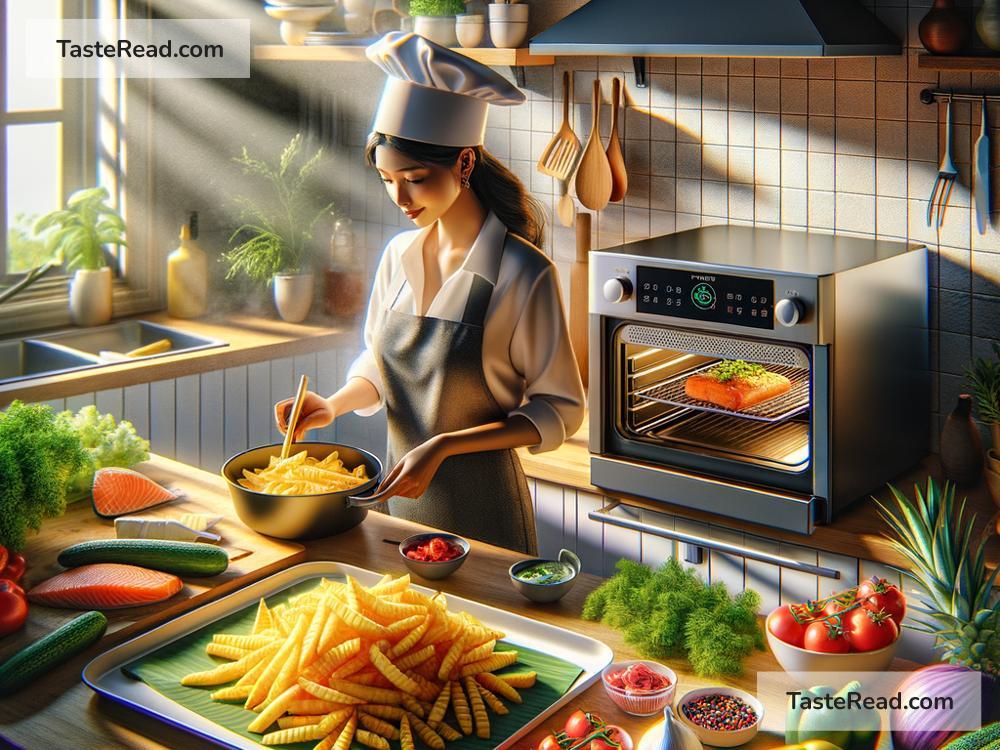The Science of Cooking with Air: Techniques and Tips
Have you ever stopped to think about how important air is when you cook? From creating fluffy cakes to crispy fried treats, many delicious foods owe their texture and taste to the magic of air. Understanding how air interacts with ingredients can help you become a better cook and bring out the best in your dishes. In this blog, we’ll explore the science behind cooking with air, some techniques used in modern kitchens, and easy tips to elevate your cooking game.
Why Is Air Important in Cooking?
Air plays a key role in many cooking processes. When air is incorporated into food, it can make textures lighter, softer, or crispier, depending on how it is used. For example:
- In baking: Air is trapped in dough or batter, causing it to rise and become fluffy when cooked.
- In frying: Hot air creates a crispy crust while keeping food moist inside.
- In whipping: Air creates soft peaks in cream or meringue, adding a smooth, airy texture.
Cooking with air isn’t just about making foods “light” or “crispy.” It’s also about understanding how to control the amount and movement of air so you can get consistent results. The success of many recipes depends on how well air has been integrated into the food.
Techniques That Use Air in Cooking
Let’s take a closer look at some common techniques where air plays a big role:
1. Whisking and Beating
These are probably the most familiar methods of adding air to food. When you whisk or beat ingredients, like eggs or cream, you’re introducing tiny bubbles of air into the mixture. This process forms a foam, which can hold its shape depending on how stable the bubbles are.
For example:
– Whipping cream turns into fluffy, soft peaks because air becomes trapped in the fat molecules.
– Whisked egg whites create meringue, which can be baked into crispy cookies or folded into cakes to make them airier.
Tip: Make sure your bowl and whisk are clean and dry. Any grease or moisture can stop the foam from forming properly.
2. Leavening Agents
Leavening agents, like baking soda, baking powder, and yeast, are a way to add air during baking. Here’s how they work:
– Baking soda and baking powder create carbon dioxide gas when they react with heat or an acidic ingredient. This gas forms bubbles, which expand and cause dough or batter to rise.
– Yeast is a living microorganism that ferments sugars and releases carbon dioxide, contributing to a fluffier texture in bread.
Tip: Measure your leavening agents carefully. Too much can cause your baked goods to collapse, and too little can result in dense, heavy textures.
3. Aerating with Machines
Modern cooking tools, like stand mixers, immersion blenders, or air whisks, make it easier to incorporate air into food. These machines save time and ensure a consistent texture, especially for time-consuming recipes like mousses, soufflés, or whipped toppings.
Tip: Use machines at medium speed for controlled aeration. High speeds can sometimes introduce too much air, causing the mixture to collapse later.
4. Air Frying
Air fryers have become a popular kitchen gadget in recent years. These devices cook food by circulating hot air around it. While it isn’t the same as deep frying, air frying uses high heat and fast-moving air to create a crispy texture without needing lots of oil.
Tip: For best results in an air fryer, don’t overcrowd the basket. Proper air circulation ensures even cooking and crispiness.
5. Sous Vide with Air Vacuum Sealing
Sous vide cooking involves sealing food in an airtight bag and submerging it in a water bath at a controlled temperature. Removing the air ensures even heating, resulting in perfectly cooked food.
Tip: Use a vacuum sealer to remove as much air as possible. Air pockets can affect how evenly the heat transfers during cooking.
Tips for Cooking with Air
Here are some easy tips to maximize the benefits of air in your cooking:
- Be gentle with delicate foams: When folding whipped egg whites or whipped cream into a batter, do it gently to avoid deflating the bubbles.
- Don’t overmix batter: Overmixing can cause the air bubbles introduced by whisking or leavening agents to collapse, leading to dense cakes and bread.
- Keep temperatures consistent: Many recipes require specific temperatures for air incorporation, such as melted butter or room-temperature eggs.
- Use fresh ingredients: Fresh eggs, flour, and leavening agents work better to trap and react with air. Old or expired ingredients can lead to flat or uneven results.
- Experiment with tools and methods: Try different techniques, like air frying or whipping, to see how air can change the final texture and taste of your food.
Final Thoughts
Cooking with air is an art and a science. Whether you’re making fluffy pancakes, crispy fries, or light soufflés, air is your hidden ally in the kitchen. By learning how to manage and incorporate air into recipes, you can transform simple ingredients into incredible dishes. Keep experimenting, pay attention to details, and don’t be afraid to try new techniques.
Cooking is all about discovery, and understanding the science of air makes the journey even more exciting. So, grab your whisk, mixer, or air fryer, and let the power of air take your cooking to new heights!


